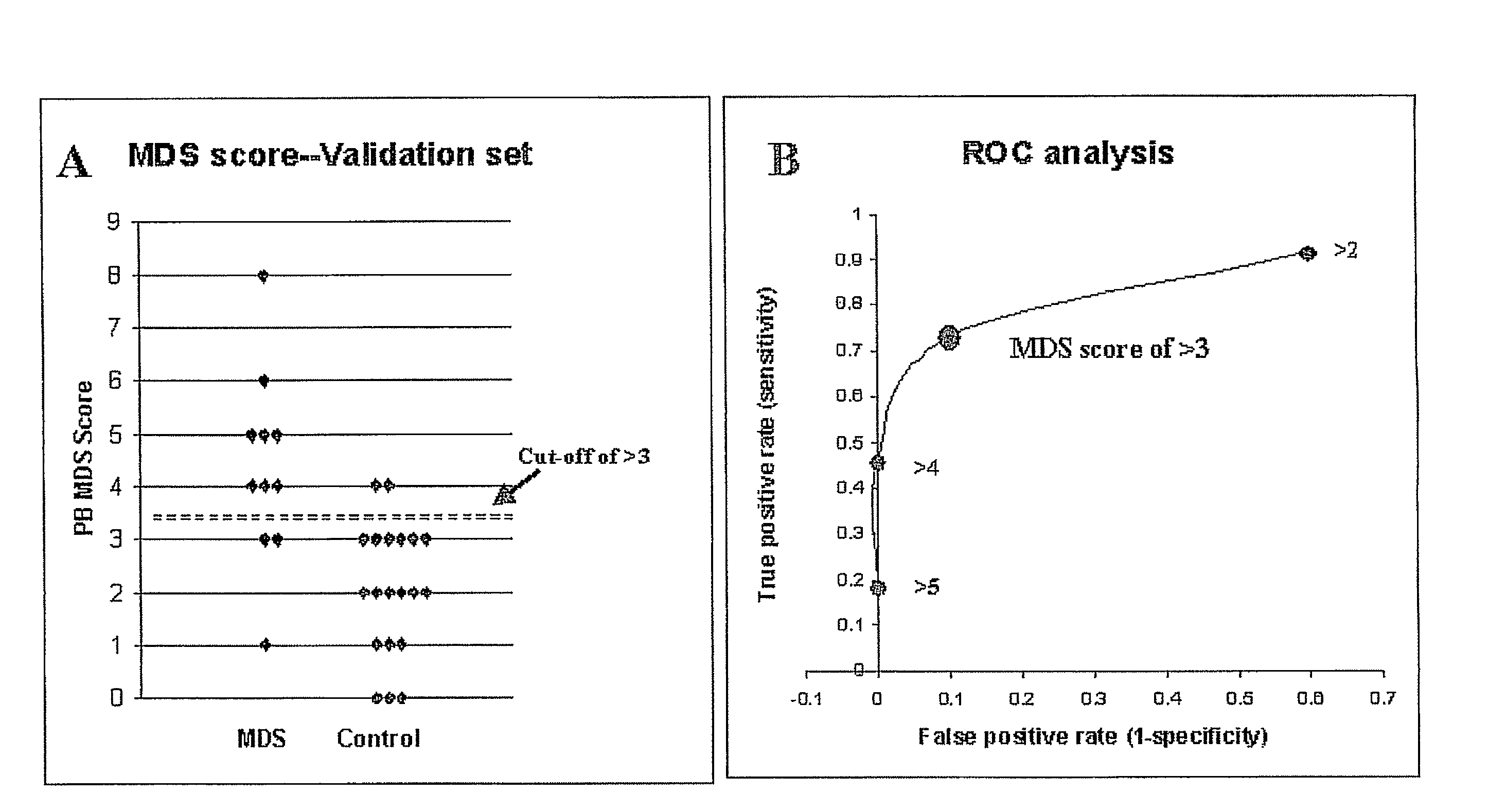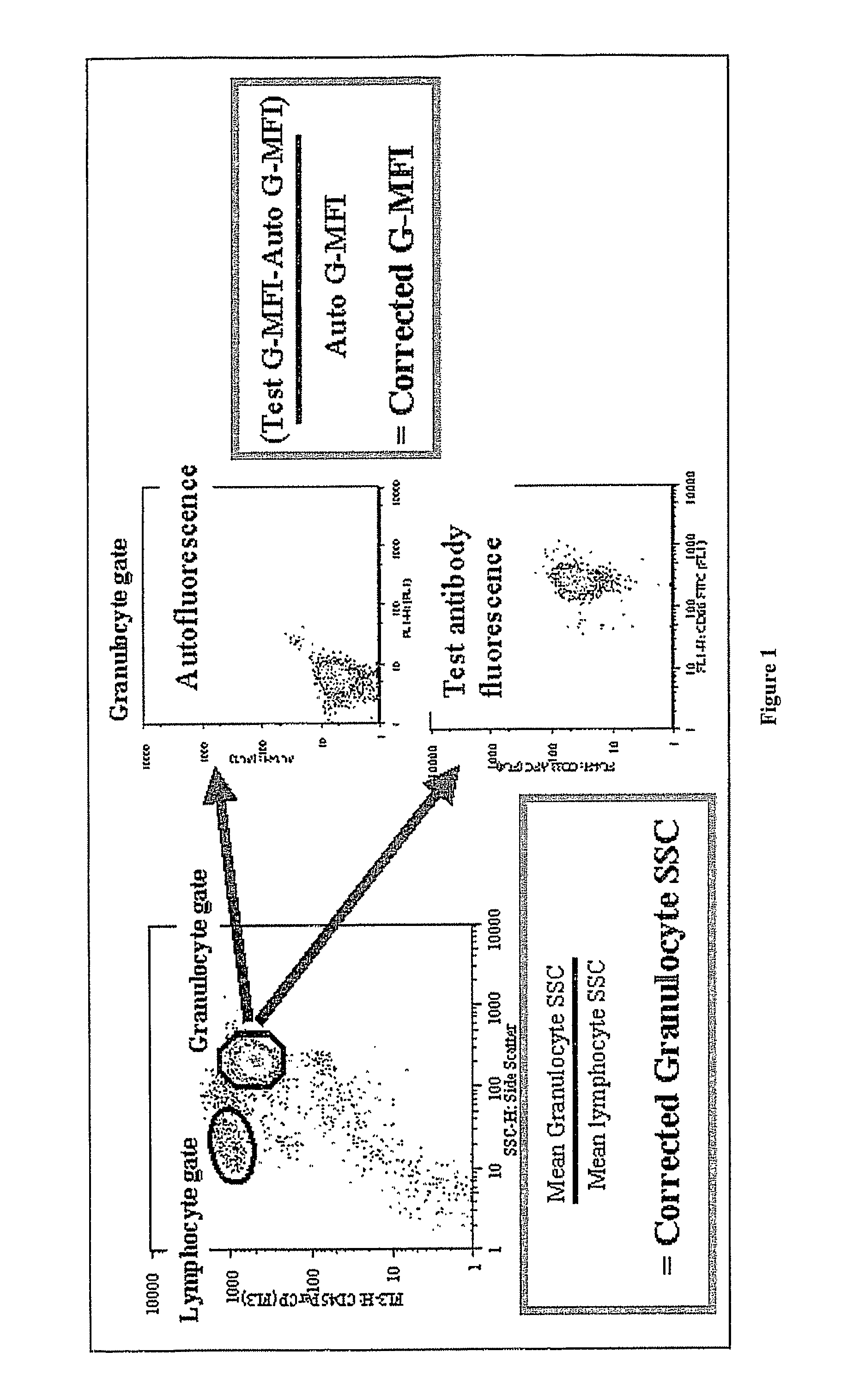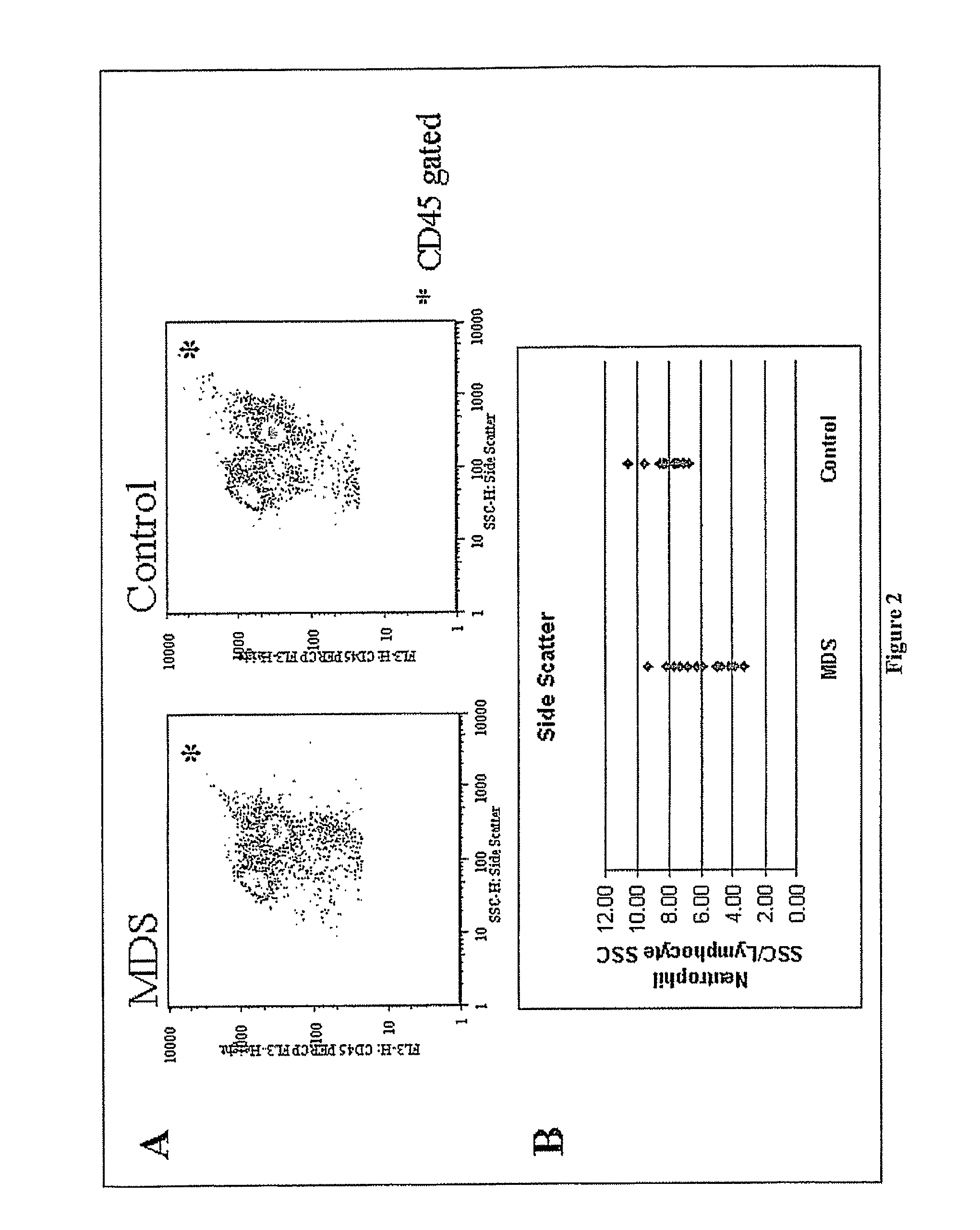Methods for diagnosis of myelodysplastic syndromes (MDS)
a myelodysplastic syndrome and myelodysplastic syndrome technology, applied in the direction of fluorescence/phosphorescence, instruments, analysis using chemical indicators, etc., can solve the problems of mds diagnosis, anemia or hemorrhage caused by dysfunction, and difficulty in diagnosis
- Summary
- Abstract
- Description
- Claims
- Application Information
AI Technical Summary
Benefits of technology
Problems solved by technology
Method used
Image
Examples
example 1
Alterations in Side Scatter and Immunophenotypic Patterns in Peripheral Blood Neutrophils From MDS Patients
[0108]Patient samples evaluated were as listed in Table 1.
[0109]
TABLE 1Clinical parameters and MDS scoresMarrowMDSSampleDiagnosis 1AgeSexWBCHemoglobinPlateletsANCCytogeneticsBlastsIPSSScore1MDS-U78M4.96.1393185Normal0.572RCMD71F3.17.6642511Normal0.553RA50F7.39.51487400Normal3044RAEB-259F8.28.6264838Complex 216385RARS58F4.37.83412900Normal0.3046RCMD61M2.37.1461432Normal20.537RCMD79M1.96.91891254Normal20.528RA79M1.79.468560Normal10.579RAEB-273M2.111.158672Normal 3182010RAEB-177M2.58.5231350Normal61311CMML-183M7.311.41753796NA 42NA 5412CMML-266M511.91391443Normal151.5613RCMD63M12.513.64610000Normal40314RCMD47F17.89.42911104I (17)(q10)41415RCMD75M3.78.9185998del11.54(5)(q15q35)†Mean67.935.649.19105.07†Standard11.204.502.0789.59DevControl†††††††††(N = 16)Mean54.137.5811.52295.81Standard18.012.772.19104.63Dev1 WHO classification: MDS-U = MDS-unclassified (case 1 = MDS with fibrosis);...
example 2
Development of a Peripheral Blood MDS Score
[0113]As MDS are a heterogeneous group of diseases it is unlikely that any parameter taken in isolation would allow discrimination of all patients with MDS. Thus, a scoring system was devised as a method to associate the heterogeneous immunophenotypic data into a format, which is more readily interpreted.
[0114]Because phenotypic changes were observable in peripheral blood-derived PMN samples from MDS patients, it was of interest to determine whether a scoring system, based only on peripheral blood neutrophils could be developed.
[0115]To create the score statistically significant differences (SSC, CD11a expression, CD66 expression) were assigned 1 point for variations obtained which exhibited from 1-2 standard deviations (SD) from the control mean value, and 2 points for variations obtained which exhibited more than 2 standard deviations (SD) from the control mean value. In addition, points were assigned for other described abnormalities suc...
example 3
Validation of the Peripheral Blood MDS Score
[0117]In order to validate the accuracy of the PB MDS score, the diagnostic approach was applied to a “blinded” series of samples obtained from 31 patients, which suffered from cytopenias and / or hematopoietic dysplasia. After completion of the scoring, diagnoses were “unblinded”, and samples were evaluated in terms of WHO criteria, where it was found that 11 samples were obtained from patients with a confirmed diagnosis of MDS (using the WHO criteria) while the remaining 20 samples were obtained from patients who did not have MDS (diagnoses included anemia of chronic disease, iron deficiency anemia, consumptive thrombocytopenias, etc.) (Table 3).
[0118]
TABLE 3Validation of the PB MDS ScoreSampleDiagnosisMDS ScoreMDS Patients:1RAEB-112MDS with fibrosis33RCMD34RAEB-245RCMD with4myeloproliferative features6MDS-U47RA58RCMD59RCMD510MDS-U, recurrent post transplant611RCMD8Mean4.36Controls:1AML*02Iron Deficiency Anemia03Anemia of Chronic disease04...
PUM
| Property | Measurement | Unit |
|---|---|---|
| size | aaaaa | aaaaa |
| size | aaaaa | aaaaa |
| spectra | aaaaa | aaaaa |
Abstract
Description
Claims
Application Information
 Login to View More
Login to View More - R&D
- Intellectual Property
- Life Sciences
- Materials
- Tech Scout
- Unparalleled Data Quality
- Higher Quality Content
- 60% Fewer Hallucinations
Browse by: Latest US Patents, China's latest patents, Technical Efficacy Thesaurus, Application Domain, Technology Topic, Popular Technical Reports.
© 2025 PatSnap. All rights reserved.Legal|Privacy policy|Modern Slavery Act Transparency Statement|Sitemap|About US| Contact US: help@patsnap.com



